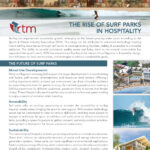THE FUTURE OF SURF PARKS
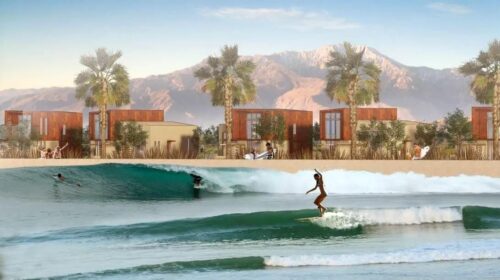
Surfing has experienced remarkable growth, emerging as the fastest-growing water sport according to the Sports & Fitness Industry Association (SFIA). This surge can be attributed to advanced technology creating inland surfing experiences through surf pools or wave-generating facilities, making it accessible to a broader audience. The ability to provide consistent, quality waves and bring them to non-coastal communities has expanded the sport’s reach. RTM has experienced first-hand the impact of surf lagoons in hospitality design, their influence on local communities, and strategies to achieve sustainability goals.
Mixed-Use Developments
Many surf lagoons are being built as part of a larger development in a resort setting with hotels, golf courses, entertainment, and mixed-use retail centers. Offering a surfing experience within a mixed-use environment can draw a broader audience by expanding amenities for guests to enjoy. By combining passions and creating a fulfilling experience for different audiences, guests are likely to extend their length of stay. These lifestyle hubs are the perfect way to attract surfers and guests looking to enjoy a variety of activities while traveling.
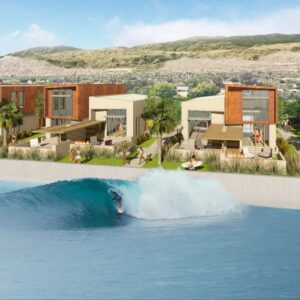 Accessibility
Accessibility
Surf parks offer an exciting opportunity to broaden the accessibility of surfing beyond coastal areas, bringing the sport to new regions. With modern technology, waves can be customized to cater to various skill levels, enabling more people to engage in and enjoy the sport. In addition, surf parks serve as vibrant recreational hubs, providing a space for people to gather, connect, and enjoy outdoor activities, making them a destination for leisure and social connections.
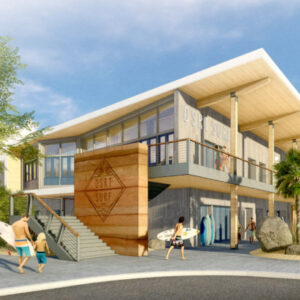 Sustainability
Sustainability
The environmental footprint of wave-generating surf parks is a critical consideration. Given their reliance on substantial amounts of water and energy-intensive wave generation systems, these parks can have significant environmental implications. Factors such as energy efficiency, water conservation, and eco-friendly construction should all be considered. Understanding project scale, physical location, solar orientation, prevailing winds, and site elements can greatly influence the amount of energy required to heat and cool a development. By optimizing the design based on these factors, we can create more sustainable structures.
This 17-acre site features a surf themed resort with premium villas, hotel rooms, and luxury amenities for travelers in search of the perfect wave.
 RTM is providing mechanical, electrical, and plumbing engineering design for multiple buildings within the resort, creating an ideal travel destination for passionate surfers. Accommodations will include a 5-story, 137-room hotel with amenities such as a restaurant, bar, cafe, meeting rooms, fitness center, amenity deck, pool and spa. Also located on the site will be 83 resort villas for guests who are looking for more space and privacy. Working closely with the project team, RTM is providing engineering design for amenities throughout the development.
RTM is providing mechanical, electrical, and plumbing engineering design for multiple buildings within the resort, creating an ideal travel destination for passionate surfers. Accommodations will include a 5-story, 137-room hotel with amenities such as a restaurant, bar, cafe, meeting rooms, fitness center, amenity deck, pool and spa. Also located on the site will be 83 resort villas for guests who are looking for more space and privacy. Working closely with the project team, RTM is providing engineering design for amenities throughout the development.
Located within the center of the site will be a 5-acre “Wavegarden Cove” utilizing state-of-the-art wave generating technology.
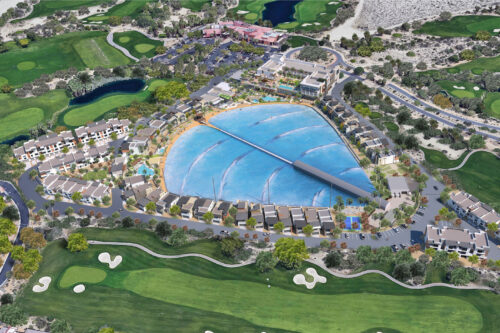 The resort will offer a 9,000-square-foot Surf Center with waves powered by The Wavegarden Cove, creating ocean-like waves in clean, crystal-clear water. The team’s aquatic design experts will implement a unique “Turf for Surf” program that will reduce and offset water use. The City of Palm Desert has identified turf areas for removal at the surrounding golf courses to reduce the water use by an amount equal to the water that will be needed in the surf pool, ultimately creating net zero water usage design. Through this initiative, the surf pool will not use any additional water above what is currently being used today.
The resort will offer a 9,000-square-foot Surf Center with waves powered by The Wavegarden Cove, creating ocean-like waves in clean, crystal-clear water. The team’s aquatic design experts will implement a unique “Turf for Surf” program that will reduce and offset water use. The City of Palm Desert has identified turf areas for removal at the surrounding golf courses to reduce the water use by an amount equal to the water that will be needed in the surf pool, ultimately creating net zero water usage design. Through this initiative, the surf pool will not use any additional water above what is currently being used today.

